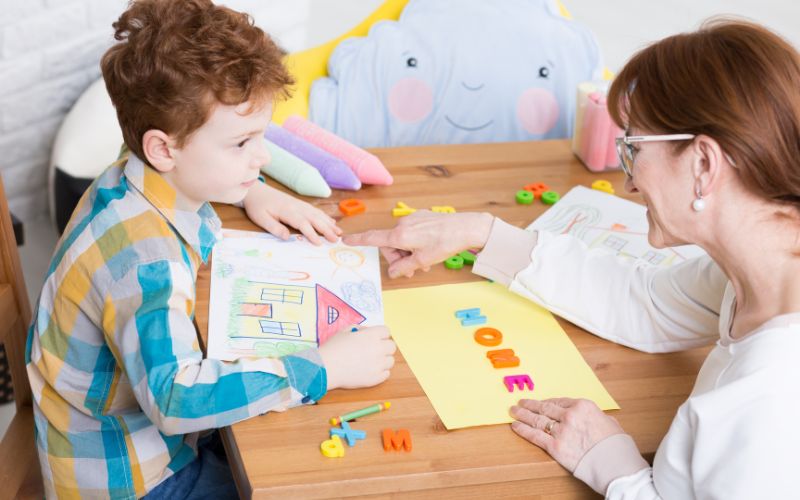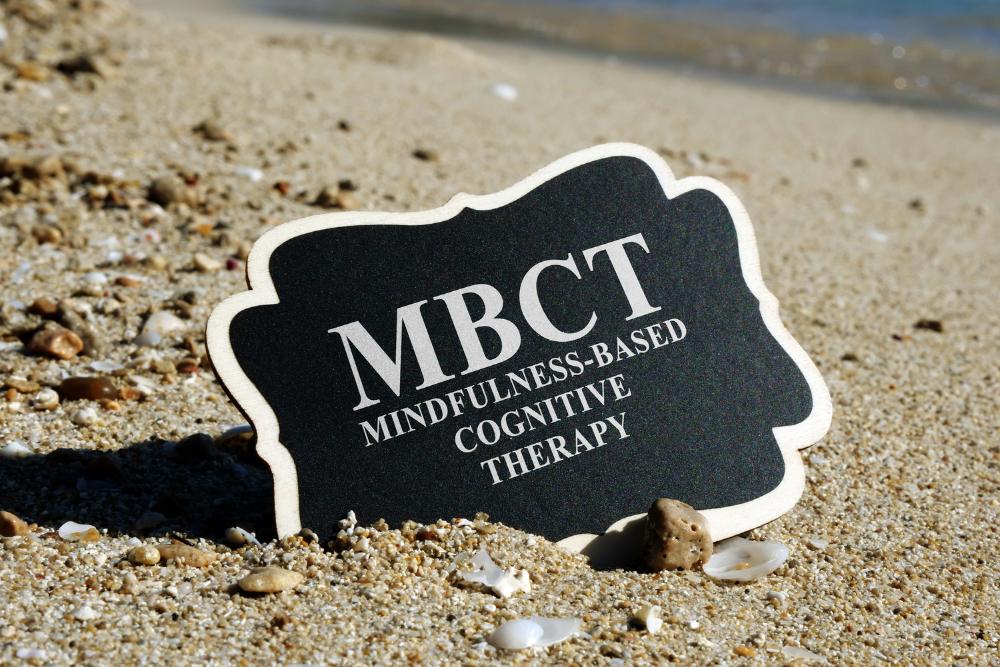One of the common issues that causes a patient to seek out therapy is depression,…

Cognitive Behaviour Therapy
Cognitive Behaviour Therapy
Regardless of the issue that you’re coming to therapy for, you may have discussed your thoughts and their many impacts on you with your therapist.
Because of its wide base within the research, cognitive behavioural therapy (CBT) is used widely within the counselling community.
It is used for issues like depression, anxiety, and an array of mental health conditions that have been shown to be responsive to the technique.–. Cognitive behaviour therapy is a type of psychotherapy designed to help treat unwanted behaviour patterns with a set of the therapy’s core principles.
Read on to learn more about cognitive behaviour therapy and how it works. Then you can understand whether or not it is the right approach for you!
What Is Cognitive Behaviour Therapy?
Cognitive behaviour therapy is also referred to as CBT for short. It is a type of psychotherapy– a structured and goal-oriented talk therapy. The main goal of cognitive behaviour therapy is to identify and then challenge negative self-talk and other unwanted types of behaviour. These can then be challenged by the patient or therapist– or both of them together– to help the patient to alter these negative patterns of behaviour. It is one of the most common forms of psychotherapy and is usually used for mood disorders, anxiety disorders and posttraumatic stress disorder and other such issues. However, it has also been shown to be able to help with some physical ailments, such as insomnia or chronic pain.
History of Cognitive Behavior Therapy
Cognitive behaviour therapy was first developed by Aaron Beck in the 1960s. He noticed that his patients with depression expressed thoughts that were not necessarily true or valid– there was a clear cognitive dissonance in their lines of thinking. This led Beck to look at depression as a cognitive disorder instead of a mood disorder. He drew up a new cognitive theory of depression, and from there was able to develop the foundation of cognitive behaviour therapy as we know it today. Many others researched CBT as well and contributed their findings to its development over the years.
Techniques of Cognitive Behaviour Therapy
Cognitive behaviour therapy implements several different techniques to treat the unwanted behaviours and negative perspectives that a patient may be experiencing. Take a look at the list below, where we go over the main techniques used in this particular therapy approach.
Identifying Negative Thoughts
Negative thoughts are common with mood disorders, and one of the important things that CBT aims to focus on is helping patients learn to identify these negative thoughts for what they are. Often, these negative thoughts are not factual, even though a patient may believe they are, and they contribute to the unwanted behaviours that are being treated. By identifying negative thoughts, a patient will be able to begin to learn what feelings, thoughts, and behaviours contribute to these undesirable patterns. It will also help to provide insights that are crucial to the process.
Practicing New Skills
A therapist may also decide to teach patients new skills in order to help them deal with real-world situations. Practicing these skills in situations can then help the patient to treat the problems that they are dealing with. These skills may differ based on what a patient is dealing with. For example, someone who has a substance abuse issue may be taught new ways to work around social situations that could trigger a relapse. They could either be taught ways that they can prevent these situations entirely or how to deal with them once they are in them already.
Goal Setting
Cognitive behaviour therapy is a goal-based therapy approach. Due to this, goal setting is another important technique that a therapist may implement. Of course, goal setting can help to make changes to a patient’s behaviours in order to change their health and life for the better. A therapist will typically sit down with the patient to make goals together– these include both long-term and short-term goals. Cognitive behaviour therapy patients will also want to set SMART goals, which stand for specific, measurable, attainable, relevant, and time-based. These goals should be focused on the therapy process, too, and not just the final outcome.
Problem Solving
Teaching a patient different problem-solving skills is important to CBT as well. This is similar to the technique of practicing new skills. These problem-solving skills should help a patient to learn how to identify and solve problems that naturally occur from small and large stressors in life. Patients are taught to first identify the problem, then to create a list of solutions. From there, they should evaluate the pros and cons of each solution they came up with. Once they have the best choice, they can implement the chosen solution.
Self-Monitoring
Self-monitoring is another important tenet of cognitive behaviour therapy. This is usually journaling or another similar way of recording. Patients will track behaviours, symptoms or experiences– or a combination of all of these– over time. Thinking about one’s thinking is often referred to as metacognition. They can then be shared with the therapist in session. This is so important because it collects valuable information and data that the therapist can then evaluate in order to provide the best possible treatment plan for the issues. The information that patient records display may differ based on what they are being treated for.
Types of Cognitive Behaviour Therapy
Cognitive behaviour therapy is an umbrella of sorts, rather than one standalone type of therapy approach. Rather, there is more than one type of cognitive behaviour therapy that lives under this umbrella, which we will go over below.
Cognitive Therapy
Cognitive therapy is an approach that focuses on identifying and then changing any thought patterns that are negative or distorted.
Emotional responses or behaviours that are negative and are not conducive to a patient’s health and well-being may also be targeted, identified, and altered in this type of approach.
As mentioned below with the modalities, the technical categorizing of therapy types depends greatly on the history and application of each therapy. What may or may not be considered CBT is not as linear as you might expect.
Multimodal Therapy
Multimodal therapy believes that any psychological issues must be treated by addressing seven different modalities.
These modalities we indicate below are considered offshoots of CBT rather than under the umbrella of CBT. Although important in the life of a person’s healing journey they are technically something of their own.
These seven modalities are believed to be different, but still, all connected. They are, as follows: affect, behaviour, sensation, imagery, cognition, interpersonal factors, and drug or biological considerations.
Dialectical Behaviour Therapy
Dialectical behaviour therapy is an approach that specifically addresses things like destructive or disturbing thoughts and behaviours. These can, of course, be detrimental to a patient’s physical and emotional health. While these thoughts are being addressed, treatment strategies like mindfulness and emotional regulation will also be implemented.
Rational Emotive Behaviour Therapy
Last but not least is rational emotive behaviour therapy. This approach will help by identifying irrational beliefs and then actively challenging these beliefs. Once they are identified and challenged, the patient will be able to recognize these patterns and change the thought patterns when they do arise.
Length of Cognitive Behaviour Therapy
You may wonder how long cognitive behaviour therapy takes to work– and the answer is that it can differ, depending upon factors such as the issue being treated and how severe it is. Typically, CBT lasts for anywhere from 12 to 20 weeks. Of course, this could take more or less time than the estimate, because all patients are different– the human mind is very complex and can vary greatly! It is important to note that sometimes, in the beginning, you can actually feel worse from therapy. This is because you are digging up complicated memories, thoughts, and emotions– it does not mean that you are moving backwards!
What to Expect From Your First Session
When it comes to your first cognitive behaviour therapy session, will be treated as more of an informational introduction session. For instance, the therapist will ask the patient questions such as what they want to work on and other general information questions about themselves.
They will then share information about themselves and their approach as well to ensure that there is a good fit between the two parties before any treatment begins. Sometimes, a therapist may feel that the patient would benefit from other treatments or medications being implemented hand in hand with CBT.
Things to Consider When Undergoing Cognitive Behaviour Therapy
If you are going through cognitive behavioral therapy, you will want to keep a few things in mind in order to succeed.
Think Of It As a Partnership
It may feel like the therapist is an adversary when they keep bringing up thoughts or behaviours that are upsetting or challenging for you. However, it is crucial that you understand that your therapist is not an enemy, but a partner in your journey to better mental health. Approach therapy sessions as a partnership, because success is the highest when you are involved and an active participant. You and your therapist should discuss and agree upon the major issues and how you are going to tackle them.
Don’t Expect Immediate Results
It is important to remember that therapy takes time to yield results, even if that may be frustrating. Of course, working through emotional issues can be draining and painful, requiring hard work on the part of a patient. When you first begin and go through those initial stages, you may actually feel worse instead of better, but if you stick with the therapy, you will find noticeable results.
Do the Work
This may be obvious, but it is crucial to your success that you actually do the work required of you. It is something that your therapist has asked you to do for a reason, and if you decide not to do the work, you will likely not see much improvement in the issues that you are trying to solve. Even if you are feeling down or do not feel motivated, do your homework and continue to go to your sessions– if you decide not to, you could derail any progress or breakthroughs that you have had so far in your journey.
Frequently Asked Questions
What is cognitive behavioural therapy?
Cognitive behavioural therapy is a particular branch of psychotherapy. It focuses on challenging the different negative kinds of self-talk, as well as negative world views, in order to alter unwanted behaviour patterns. It can be very effective in treating mood disorders like depression, anxiety disorders, and post traumatic stress disorder where these unwanted patterns of behaviour crop up often.
What is an example of cognitive behaviour therapy?
Cognitive behavioural therapy implements certain different techniques in order to help its patients. One such method is journaling to record your thoughts, as well as your feelings about these thoughts, during the day. You could also try to expose yourself to situations that make you uncomfortable in order to help you get over them. An example of this could be going in to order your coffee if you usually try to avoid the interaction by using a food delivery service. It is important to get an understanding of the patient’s behaviours and motivations in order to change them.
What are the 5 components of cognitive behavioural therapy?
Cognitive behavioural therapy, or CBT, has five main components used in its approach and treatment. A therapist will break their patient’s problems into these five main components, or areas. These are situations, thoughts, emotions, actions, and physical feelings (although not as well represented in the actual application of the therapy).
Breaking down the issues a person is facing can give the therapist a direction in which to move, and it can also make these problems seem more approachable and possible to overcome. The therapy approach is based on the idea of all of these being interconnected, and they may affect each other in different ways.
For instance, a patient’s thoughts in a situation can affect how they feel both physically and emotionally.
What are 3 basic principles and concepts of CBT?
Just as there are certain main components for a patient’s issues under the CBT approach, there are also some basic principles of this therapy approach. There are three main concepts here– the first is to learn to identify a person’s distortions in thinking that create problems, and then to learn how to evaluate them realistically. Gaining a perspective of a person’s behaviours and motivations is the second principle. Last, but not least, is learning to use problem-solving skills to cope with situations that are challenging or difficult.
For other types of therapy treatments visit them below:
Cognitive Behaviour Therapy
Emotion-Focused Family Therapy
Accelerated Resolution Therapy
Acceptance and Commitment Therapy
Dialectical Behaviour Therapy Calgary



